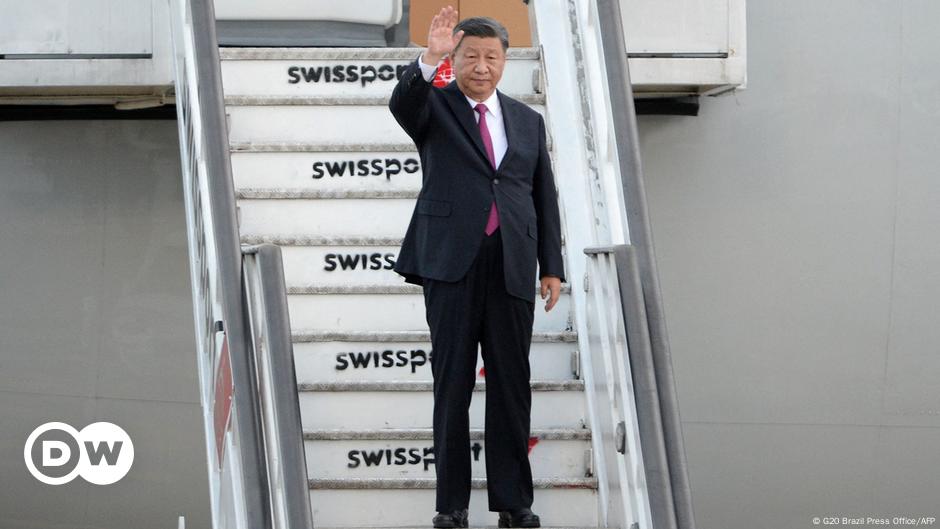Hezbollah has been launching rockets just miles from Israel’s northern border and has shown a willingness to target UNIFIL bases.
By SETH J. FRANTZMAN NOVEMBER 20, 2024 16:12 Updated: NOVEMBER 20, 2024 16:15 Smoke billows over Nahariya after Israeli anti-air defence systems operate, as they intercept rockets fired from south of Lebanon to Israel, amid ongoing hostilities between Hezbollah and Israel, as seen from Nahariya, northern Israel, October 28, 2024.
(photo credit: REUTERS/GONZALO FUENTES)
Smoke billows over Nahariya after Israeli anti-air defence systems operate, as they intercept rockets fired from south of Lebanon to Israel, amid ongoing hostilities between Hezbollah and Israel, as seen from Nahariya, northern Israel, October 28, 2024.
(photo credit: REUTERS/GONZALO FUENTES)
Hezbollah fired rockets on November 19 that hit and damaged a UNIFIL post, the IDF said yesterday.
This took place from locations that are only around six miles north of the Israeli border. One of the rockets was fired from the area of Maaliyeh in southern Lebanon. This is an area around a mile east of the beaches south of Tyre. In normal times it would be near areas where people might be spending a holiday. However, Hezbollah has turned these areas into sites to threaten Israel.
The attacks on November 19 that threatened UNIFIL posts illustrate how close Hezbollah continues to operate to Israel’s northern border. This means any ceasefire would likely leave Hezbollah operating just several miles north of the border unless a mechanism is found to get Hezbollah to leave and confirm it has moved away.
The IDF noted on November 19 that there were several attacks on UNIFIL posts. “At 09:50 this morning (Tuesday), Hezbollah fired a rocket that hit a UNIFIL post in the Ramyeh area in southern Lebanon.” The rockets fired from Maaliyeh appeared to target an area in Lebanon.
This means Hezbollah was firing rockets from an area around six miles north of the Israeli border toward other places in Lebanon. The rockets were fired toward a UNIFIL post, the IDF said. Pro-Iranian Al-Mayadeen media has said the IDF is operating in the area of Chamaa, which was targeted by the rockets.
Rockets hit a UN post in Lebanon
The other attack included rocket fire from the area of Dayr Aaames. The rockets crossed into Israel but also hit a UN post in Lebanon near the border with Israel. Once again the rocket fire took place only around six miles from the border. It is in the hills near Qana and Kafra. It is due north of Ayta ash Shab which is a Lebanese border village that overlooks the Israeli community of Shtula. Hezbollah has often operated in Ayta ash Shab.
What the two incidents tell us is that Hezbollah is willing to target or harm UNIFIL posts. It also illustrates how close Hezbollah continues to operate near the border. Hezbollah uses rocket launchers that usually can fire up to 24 or more rockets at a time. These launchers are not very large and they can be easily moved, for instance in the back of a truck.
That means any civilian-looking truck could carry rockets from place to place. The rocket launchers are often concealed in areas such as under trees and near bushes, or places in a small hole in the ground or behind a wall. This enables Hezbollah terrorists to easily come to a site and fire the launchers. In many cases the IDF has found launchers in southern Lebanon that are full of rockets, primed and ready to be fired. This likely shows that Hezbollah loads the launchers in many places and then leaves them in place for days or months, ready to use at a moment’s notice.
Hezbollah has festooned southern Lebanon with rockets, munitions and other weapons. The IDF has spent a month and a half clearing out areas closer to the border, usually the first or second line of villages that area about a mile or two from the border. This includes areas along the line of villages that runs from Meiss al Jabal to Houla, Maroun al-Ras and Kfar Kela. There are more than a dozen of these villages that are right on the border with Israel. Then there are those slightly further away, such as Khiam and Bint Jbeil or Chamaa.
The IDF has worked carefully in the operations over the last month and a half. However, what that means is that it has taken a long time to clear the border areas. The IDF captured some of these same areas in the first day of the war in 1982 when the IDF invaded Lebanon that year. The IDF also operated faster in Lebanon in the operation in 1978 and 2006. Back in those days the IDF always knew it had a limited time to accomplish a large task. The operation in Lebanon is modelled on operations in Gaza.
Stay updated with the latest news!
Subscribe to The Jerusalem Post Newsletter
The question that exists now, as there is talk of a ceasefire, is whether Hezbollah will be left in control of most of the areas south of the Litani. This is where Hezbollah threatens Israel directly. The rocket fire on November 19 illustrates how close Hezbollah continues to operate to the border. Although Hezbollah has suffered losses, with estimates claiming it may have lost 1,000 or 2,000 fighters, it still possesses significant assets in Lebanon. Even if it has lost some of its rocket stockpiles, with estimates claiming up to 80 percent have been destroyed, it still has tens of thousands of rockets. This is far more than it had in 2006 when it fought the IDF for thirty days in a difficult war.
What this means is that although Hezbollah takes losses, it is likely that it is still stronger today than it was at the end of the 2006 war. The UN Resolution 1701 which was part of the end of that war did not lead Hezbollah to leave southern Lebanon.
UNIFIL has failed to fulfil its mandate in Lebanon and many foreign countries appear unwilling to even condemn or mention Hezbollah when discussing Lebanon. UNIFIL and other organizations often refer to Hezbollah as an “armed group” or “non-state actor” meaning that Hezbollah is never held to account.
The US talks aimed at achieving a ceasefire take place with Lebanon Speaker of Parliament Nabih Berri, who leads the Shi’ite Amal movement. He acts as a cut out for Hezbollah. But Hezbollah does not appear to be mentioned in the potential “ceasefire” between Israel and Lebanon.
Israel’s new Defense Minister Israel Katz said today during a visit to an IDF Military Intelligence base that “the condition for any political arrangement in Lebanon is the preservation of intelligence capacity and the preservation of the IDF's right to act and protect Israeli citizens from Hezbollah." This is important because Hezbollah is only a few miles north of the border and can easily infiltrate back if it wants to. It can easily move rocket launchers back to the border region and move anti-tank missiles and other munitions.
Hezbollah can move these in civilian vehicles and all it has to do is hide them in areas and it can once again festoon the border with threats. Hezbollah has done this before. The rocket fire on November 19 reveals the fact that the group continues to operate and conceal rockets not far from Israel. If the international community will not change the UNIFIL mandate to force it to actually mention “Hezbollah” in its statements and actually deal with Hezbollah’s threats, then nothing will change from how Hezbollah returned to threaten Israel after 2006, and then grew exponentially more powerful.

 By The Jerusalem Post (World News) | Created at 2024-11-20 14:40:07 | Updated at 2024-11-24 19:52:02
4 days ago
By The Jerusalem Post (World News) | Created at 2024-11-20 14:40:07 | Updated at 2024-11-24 19:52:02
4 days ago








